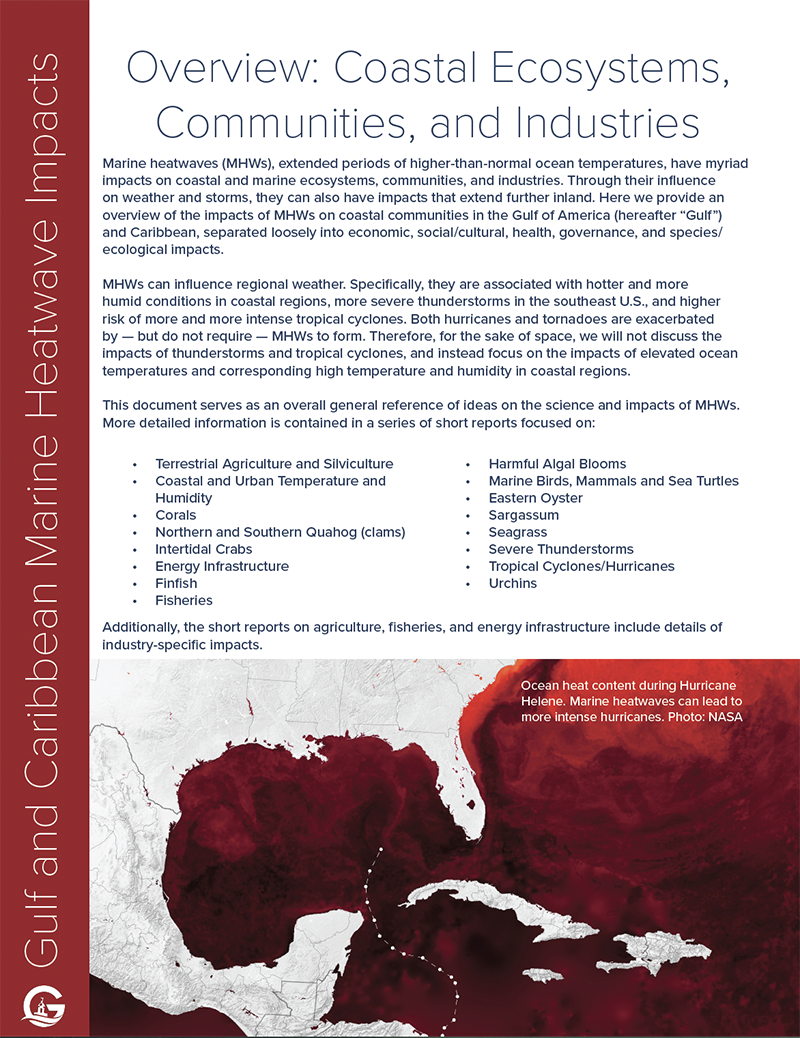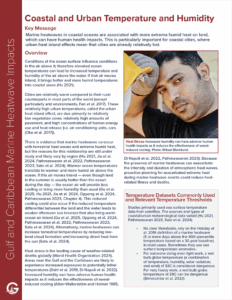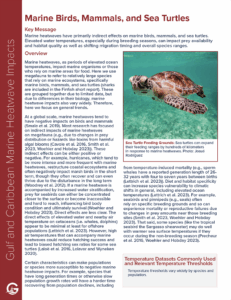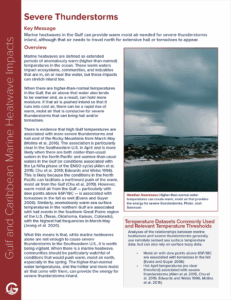Tracking Marine Heatwaves in the Gulf
The world’s oceans are getting hotter; in fact, May 2024 was warmer globally than any previous May in the data record. We know that warmer ocean temperatures can mean more frequent and more intense hurricanes, but that’s just one impact. Marine heatwaves (MHW) — warmer than normal water temperatures over an extended period — can impact fisheries, coral reefs and even inland temperatures.
GCOOS is partnering with researchers at the University of South Alabama/Dauphin Island Sea Lab (DISL) on a project focused on MHW. In addition to developing a framework for expected heatwave impacts and a heatwave alert system, the project will define the tools needed for better detection of marine heat waves — both at the surface and in the water column — to help Gulf stakeholders and resource managers mitigate impacts on coastal communities, ecosystems and industries.
GCOOS National Academy of Sciences Science Policy Fellow Dr. Ren Kamakura is leading the project.

Time series of the sea surface average temperature anomaly for the Gulf of Mexico (red) and northern subtropical Atlantic Ocean, from Wang, Z., T. Boyer, J. Reagan, and P. Hogan, 2023: Upper-Oceanic Warming in the Gulf of Mexico between 1950 and 2020. J. Climate, 36, 2721–2734, https://doi.org/10.1175/JCLI-D-22-0409.1.
Marine Heatwave Impact Reports
Marine heatwaves — extended periods of higher-than-normal ocean temperatures — have myriad impacts on coastal and marine ecosystems, communities and industries. As part of our ongoing marine heatwaves project, we developed “Gulf and Caribbean Marine Heatwave Impacts” discussing various heatwave economic, social/cultural, health, governance and species/ecological impacts in the region. The document includes a broad overview and a series of short reports.
- Click each image to read or download a PDF of each report.
- Click here to download the full report
































